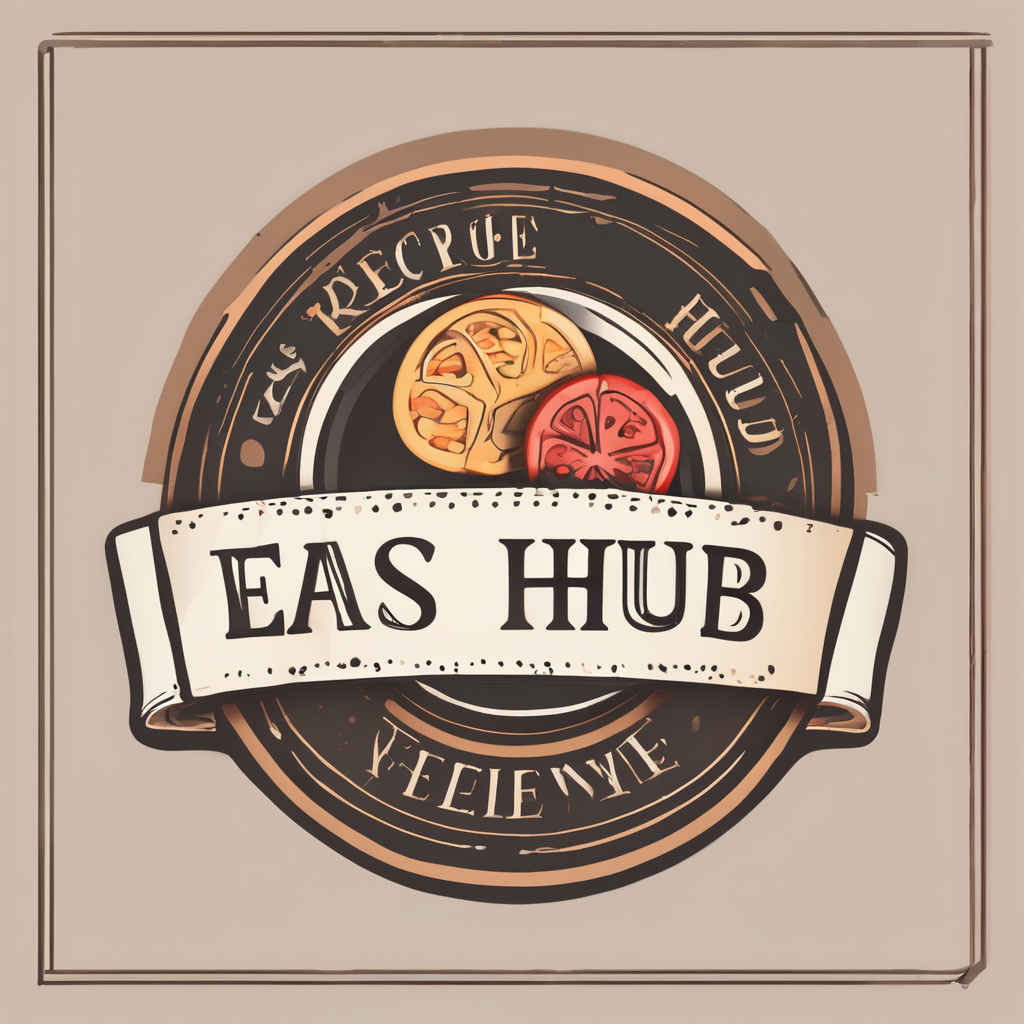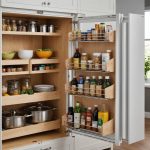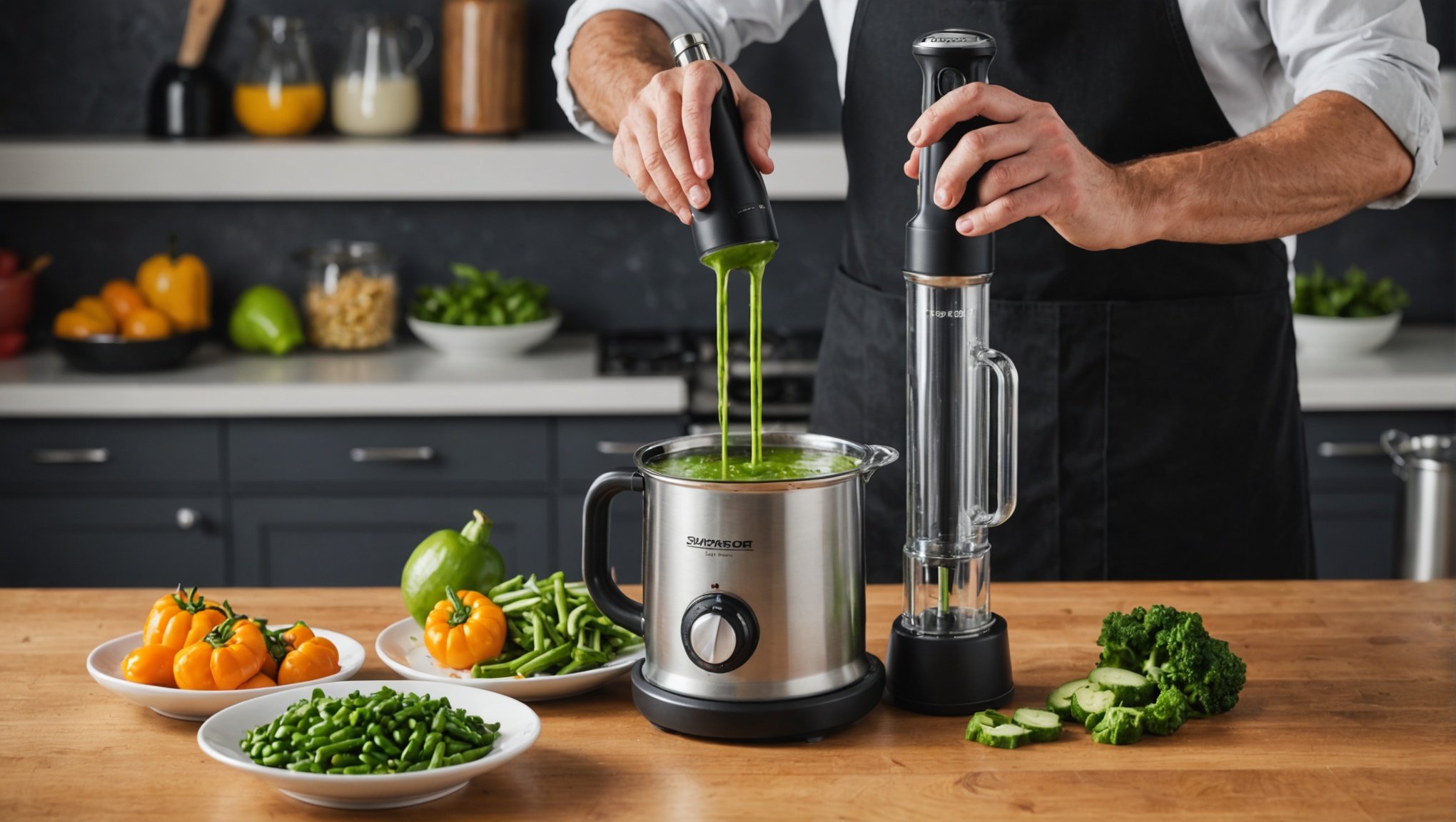Hot soups are comforting staples, but blending them can often lead to messy splashdowns. Choosing an immersion blender that minimizes splatter is essential for a seamless cooking experience. This guide simplifies your decision-making process, highlighting key features and tips to ensure you select the perfect splash-free immersion blender. With the right tool, enjoy silky, smooth soups without the fear of kitchen chaos. Let’s dive into the essential steps for mastering your hot soup preparations!
Key Features of Immersion Blenders for Hot Soups
When it comes to hot soup preparation, choosing the right immersion blender can make a significant difference. One crucial aspect to consider is the power and motor strength. A robust motor ensures that the immersion blender can handle thick and chunky soups without overheating or stalling. Generally, a motor with at least 200 watts is recommended for efficient blending.
Also to read : Top Space-Saving Drawer Organizers for Compact UK Kitchens
Equally important is the blade design and material. Stainless steel blades are preferred due to their durability and resistance to corrosion. They offer a smoother blend, especially when working with hot ingredients, and maintain their sharpness over time. The design of the blades, whether straight or curved, can influence the blending efficiency and consistency.
Ergonomics play a vital role in the ease of use of immersion blenders. Features such as a comfortable grip and lightweight design can significantly enhance the user experience. An ergonomic handle reduces strain during prolonged use, making it easier to blend large batches of soup.
Also to discover : Top Space-Saving Drawer Organizers for Compact UK Kitchens
In summary, when selecting an immersion blender for hot soups, focus on power, blade quality, and ergonomic features to ensure a seamless cooking experience. These key features collectively contribute to better performance and user satisfaction.
Top Rated Immersion Blenders for Making Hot Soups
Exploring the best immersion blenders for hot soup preparation can be an exciting journey. With numerous options available, understanding which models stand out is crucial for making an informed decision.
Overview of Top Models
When considering product reviews, several immersion blenders consistently receive high praise. These models are celebrated for their efficiency, durability, and ease of use. For instance, the Breville Control Grip is often highlighted for its ergonomic design and powerful motor. Meanwhile, the KitchenAid Variable Speed Hand Blender is appreciated for its versatility and excellent performance in blending hot soups.
Performance Comparison
In terms of performance, the best immersion blenders are those that can handle a variety of soup textures. The Braun MultiQuick 5 stands out with its unique blade design, ensuring a smooth blend even with chunky ingredients. The Cuisinart Smart Stick offers a robust motor that prevents overheating, making it ideal for prolonged use.
Price Range and Value
When evaluating product reviews, it becomes evident that price does not always equate to quality. Models like the Hamilton Beach 2-Speed Hand Blender offer great value, providing reliable performance at a budget-friendly price. Investing in a high-rated immersion blender ensures both quality and longevity, making it a worthwhile addition to any kitchen.
Benefits of Using Immersion Blenders for Soup
Immersion blenders are invaluable kitchen tools that offer numerous advantages in soup preparation. One of the primary benefits is their speed and efficiency. Unlike traditional blenders, immersion blenders allow you to blend soups directly in the pot, eliminating the need to transfer hot liquids. This not only speeds up the process but also reduces the risk of spills and burns.
Another significant advantage is the reduced risk of splattering. Immersion blenders are designed to minimise splattering, ensuring a cleaner cooking environment. This feature is particularly beneficial when working with hot ingredients, as it prevents mess and potential accidents.
In addition to performance benefits, immersion blenders are appreciated for their easy cleanup and storage. Most models come with detachable shafts that can be washed separately, making cleanup a breeze. Their compact design allows for convenient storage, even in kitchens with limited space.
The combination of these features makes immersion blenders a practical choice for anyone looking to enhance their soup preparation experience. Whether you’re a seasoned chef or a home cook, these versatile tools can significantly improve your kitchen efficiency and safety.
Safety Tips for Using Immersion Blenders with Hot Liquids
When working with hot liquids, ensuring immersion blender safety is paramount. One of the essential safe blending tips is to allow soups to cool slightly before blending. This reduces the risk of splattering, which can cause burns. Additionally, always keep the blender submerged while in use to prevent hot liquid from splashing out.
Another crucial aspect of immersion blender safety is using the right blending techniques. Start blending at a low speed and gradually increase it as needed. This helps maintain control over the process and minimises the chances of splattering. Also, move the blender gently in a circular motion, ensuring even blending without creating a vortex that might draw in air.
Avoiding common mistakes is vital for safe blending. Never fill the pot to the brim with hot soup, as this can lead to overflow when the blender is introduced. Instead, leave some space to accommodate the blender and the movement of the liquid. Furthermore, always ensure that the blender is turned off before inserting or removing it from the pot to prevent accidental splashes. By following these guidelines, you can safely and efficiently prepare delicious hot soups.
Techniques for Making Delicious Soups with Immersion Blenders
Creating delicious soups with an immersion blender involves mastering a few key techniques. These methods not only enhance the flavour and texture of your soups but also streamline the cooking process.
Basic Soup Recipes
Starting with basic soup recipes is an excellent way to familiarise yourself with immersion blender techniques. A classic tomato soup, for instance, can be made by sautéing onions and garlic, adding canned tomatoes and vegetable broth, then blending until smooth. This simple recipe highlights the efficiency of immersion blenders in creating smooth, creamy textures.
Flavor Enhancement Techniques
To elevate the taste of your soups, consider flavour enhancement techniques. Infuse your soups with herbs like basil or thyme during the cooking process, and blend them in for a uniform flavour. Additionally, roasting vegetables before blending can add depth and richness, transforming a basic soup into a gourmet dish.
Texture Variations and Adjustments
Achieving the perfect soup texture is crucial. For chunkier soups, blend only a portion of the ingredients, leaving some pieces intact. Conversely, for a velvety consistency, ensure all components are thoroughly blended. Adjusting the blending time and speed allows for precise control over the soup’s final texture, catering to personal preferences.
Maintenance and Care of Immersion Blenders
Proper immersion blender maintenance is crucial for ensuring its longevity and optimal performance. Regular cleaning is the first step in effective product care. After each use, detach the blending shaft and rinse it under warm water to remove any residue. For a thorough clean, immerse the shaft in soapy water and use a sponge or brush to scrub the blades carefully. Avoid submerging the motor body in water to prevent damage.
Storage recommendations play a significant role in maintaining your immersion blender. Store the blender in a dry place, preferably in a cupboard or on a shelf, to protect it from dust and moisture. If your model includes attachments, keep them together in a dedicated container to avoid misplacement.
Troubleshooting common issues can help extend the life of your blender. If the blender doesn’t start, check the power connection and ensure the safety lock is disengaged. Overheating can be a problem during prolonged use; allow the motor to cool down before continuing. If the blades become dull, consider replacing them to maintain blending efficiency. Regularly following these tips will enhance your immersion blender’s performance and longevity.
User Reviews and Feedback on Popular Models
When examining immersion blender reviews, customer feedback provides valuable insights into user experiences. Many users praise the Breville Control Grip for its ergonomic design and powerful motor, which easily handles thick soups. Customers often highlight its comfortable grip as a significant advantage, particularly during extended blending sessions.
Summary of User Ratings and Comments
User ratings frequently commend the KitchenAid Variable Speed Hand Blender for its versatility and performance. It is often noted for its ability to blend hot soups smoothly, making it a favourite among home cooks. However, some users mention that its multiple attachments can be cumbersome to store.
Common Pros and Cons Highlighted by Users
A recurring pro in user experiences is the Braun MultiQuick 5’s efficient blending capabilities, even with chunky ingredients. Its unique blade design is a standout feature. On the downside, a few customers report that the motor can overheat with prolonged use, suggesting a need for occasional breaks during extended blending tasks.
Insights into Long-Term Satisfaction and Performance
Long-term satisfaction with immersion blenders often hinges on their durability and ease of maintenance. Users appreciate models with detachable shafts for simple cleaning, which enhances the overall user experience and prolongs the life of the appliance.






